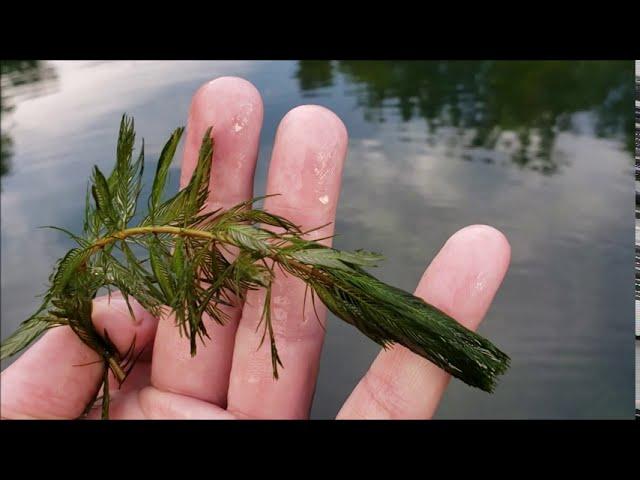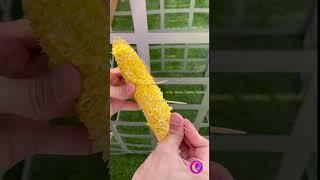
Collecting Native Aquatic Plants For My Aquarium
Комментарии:

Cute nail polish
Ответить
My shrimp and platies love eating plants I pick. If you don't have a boat go to the boat launch on weekends after everyone tills up the water. I get a lot with roots and all for the tank. About 10% survives, but in the end, it is free food, which is good since keeping planted tanks is crazy expensive doing it through a store.
Ответить
Ive gotta ask the obvious but stupid question whats up with your thumb ive noticed it like that for basically every video sorry just wondering
Ответить
That’s cool. I have all plastic tank that I want to turn into all plants tank. So I did some of the same today. I collect some of ludwigia today. It’s in quarantine tank so far. There are so many aquatic plants you can get in the while here in Florida. How did you plants do in your tank? I think I’ll follow you 😊
Ответить
I just put 3 types of lake plants from BC, Canada into my aquarium. I wonder what will happen.
Ответить
Hornwart also know as coontail
Ответить
Folks, and video author included, please know for sure what plant you are transporting and cultivating.
The plant shown is highly likely NOT native to the location shown. It is likely an extremely invasive aquatic plant from across the Atlantic ocean.
Humans have done so much damage that I must ID check plants even far away from areas humans have desecrated.
It is advised to get on an invasive plant forum or contact your native plant society at the state level and use inaturalist.
Use all means necessary.
All it takes is one shred of a stems, root, leaf, root seed...any part of a plant to then transport invasive non-native pathogens as well as absolutely change an entire area's ecosystem from one stupid stupid mistake.
And people are making mistakes constantly and it DOES have more than just am impact on non humans (which we should care about) it affects the beauty and sense of a place and causes human economic damages.
Evolution is real...novel introductions of organisms from across entire oceans will take thousands if not millions of years to stabilize after localized extinction events extirpate much of an areas biodiversity.
Think Kudzu, think cogongrass, think chinese ligustrum, think boston fern...all are horrifically contributing to the slow death of our local food webs.

the stuff that looks like anacharis is the "prohibited" hydrilla, I still wanna try...
Ответить
Watching these videos in the dead of winter is making me excited to get back out on my kayak and plant hunt as soon as the weather permits. Great video!
Ответить
Post more videos of you collecting native fish and plants.
Ответить
Feathery one is a Myriophyllum aka Eurasian Milfoil
Ответить
The feathery plant looks like myriophylum
Ответить
Here in the UK Anacharis is also known as Canadian pond weed so it's definitely a native N American plant.
Ответить
I'd like to see them in the water rather than out of the water in your hands. Fast forwarded again and again and got disappointed at last.
Ответить
Beautiful pond i want fishing this pond so that's only in my dream
Ответить
Hornwart, Camboda, or parrotfeather is what you called the feathery plant at the beginning. Couldn't tell exactly because all three of them are feathery. Probably Parrotfeather since its an invasive species that seems to have spread everywhere. Hornwart is usually a tougher plant that will sorta hold its shape when taken out of water and usually in a mat floating on the surface. Camboda is a more delicate plant that does well once established but I usually see it only in stagnant / forgotten waters where its never disturbed to grow in peace
Ответить
Who else does this in their aquarium channel? Thanks, liked.
Ответить
It's so peaceful as you glide along the river, so much stuff to see
Ответить
The plant you showed in the thumbnail is not native. That is the invasive Eurasian watermilfoil. Very bad for aquatic systems. Fine for your tank, just don’t move it!
Ответить
those are all awsome plants
Ответить
Please do more of these videos! 🤘
Ответить
The plant may be Cabomba, but I think Bart Simpson might say, "Ay Caramba". 😉. Good video. 📺👍😎
Ответить
The feathery one is Definitely Parrot's feather I have it in my tanks very fast growing plant looks great when it starts growing emersed!
Ответить
Spindly stuff is Elodea Anacharis related species.
Ответить
Hello dan, the feather looking plant looks like Hornwort. I believe it resembles the one you have and they grow very very fast. There's Soft Hornwort and regular hornworts.
Ответить
I mistakenly called the combomba plant feather fern when it might actually be Hornwort. Anacharis and Elodea are one and the same species Anacharis Elodea. Vallisinaria and Sagittaria are all native North American plants along with Hornwort, Anacharis Elodea, and water lilies.After seeing the plant I am fairly sure the fathery plant is Hornwort.
Ответить
remember to give wild aquatic plants a rinse in chlorinated water, and to quarantine them for 6 months, before using in your tanks to prevent parasites, pathogens, and pest insects snails, from affecting your fish.
Ответить
1st view and 1st like sir
Ответить




![YOUNG KAI X YUNG ADISZ - CENTRUM [Directed by uglyassocho] YOUNG KAI X YUNG ADISZ - CENTRUM [Directed by uglyassocho]](https://ruvideo.cc/img/upload/RWtLc1BRYnloV0Y.jpg)














